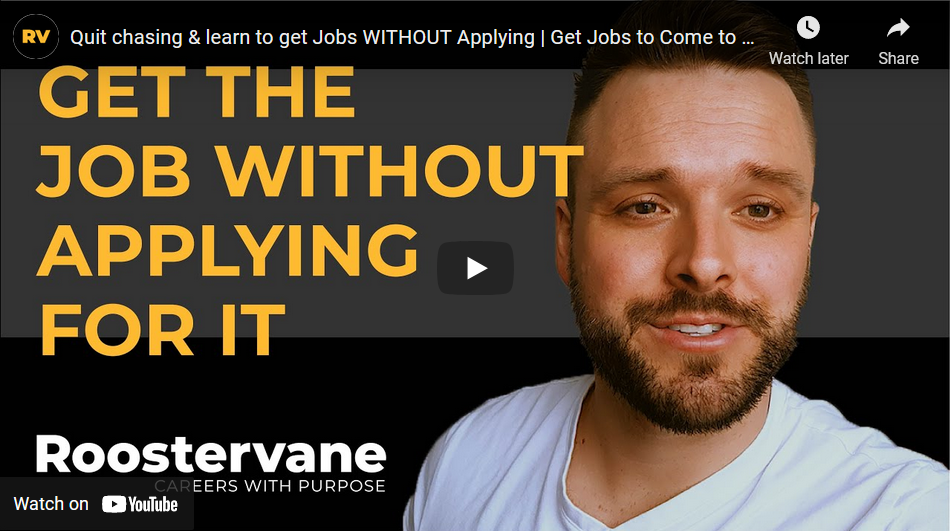Updated May 27, 2021
I wasn’t expecting that knowing how to get research funded would be my most valuable skill after I left academia. To be honest, I thought that most organizations just had money.
Was I wrong! With each organization I worked for, I realized that everyone needed to win funding. When I worked at a think tank, we would conceptualize projects and then convince organizations to fund them. As a non-profit, it drew a combination of funding from government, corporations, and foundations, usually mixing and matching in order to get to whatever funding target was required.
When I started working for the government, I was working on international refugee projects. To my surprise, even in government, I had to apply for funding. In fact, one of my first tasks was working on an internal funding competition—different parts of the department competed to get their idea funded. Since we were working to develop refugee programs in other countries, funding was a universal language.
Funding is vital to most research organizations. And it’s important almost everywhere you go.
What follows is a condensed post based on a recent webinar I did: How to Get Research Funded Outside of Academia. If you would like, you can click the link at the end of the post and I’ll send you the full, 5,000+ word PDF guide.
Why do I need to know this?
- You’ll be valuable to employers.
- You’ll pay your own salary
- You can work for yourself, on your own projects.
- You can straddle the academic/non-academic line.
What follows is a non-exhaustive list of funding that you can apply for. It’s based on my experiences of funding things outside of academia, where the funding sources varied. For some of these examples, I’m including a section called What they Want. Knowing what these funders want is important to know when you pitch them. After all, they don’t exist only to make your research happen. If you want to work with them, you’ll need to identify where you bring them value and create work that is mutually beneficial.
1. Academic Grants/Post Docs
I’ll start here, not because it’s the best source, but to get it out of the way. Academia can be a part of this conversation. After all, a lot of research happens there. You can leave academia, get off the tenure track, stop chasing positions, and still take money from the academy. You can find and create your own post doc or get research funds from a professor to do so. You can form a partnership with a professor, even if you’re not in academia.
In Canada we have a program called Mitacs that does fund post docs. if you can raise some of your own funding or get an organization to pay you, they will match it. As far as I know, there’s no U.S. federal equivalent.
2. Think Tanks
What do think tanks do anyway? I don’t know many people who really know. But I’m so glad my first career experience was at a think tank. It allowed me to meet a cross-section of the working world, people from the private sector, government, non-profits, and more. Think tanks do research and share ideas—a perfect match for a lot of academics.
Think tanks are usually non-profit organizations, and are funded in various ways, such as:
- membership funding (ie. institutional members)
- project funding
- endowments
- donations
There are also some think tanks within government that have a mandate to provide policy direction. Examples of this include the International Development Research Centre in Canada or the U.S. Global Change Research Program in the U.S.
What they want . . .
Think tanks want to get their ideas into the public sphere. They want to influence, especially the realm of public policy and the actions of government. In suggesting courses of action and influencing policy directions, they show value to funders. This CAN be the shadowy side of think tanks. It can be a way for corporations to buy access to influence the decision-making process. You’ll need to find a think tank that mostly aligns with your values. If you’re a progressive lefty, don’t try to work for The Heritage Foundation.
Some Examples of Think Tanks Careers
U.S.
Canada
Canadian Centre for Policy Alternatives
UK
3. Private Sector
This is a hard entry to write, because so many companies do research! From pharmaceuticals to banks to geologists to management consultants, sometimes the best way to get paid to do research you love is to get hired by a company that does it. Find a company interested in the same things you are and try to meet with someone. Tell them you have a project to pitch they’ll be interested in. See if they are.
If you don’t want to get hired as an employee, perhaps you want to be a consultant. Lots of companies would consider this. But it’s up to you to do your homework and figure out where you’d fit, as well as to meet people from the company and create your opportunity. Companies don’t often post that they’re looking for consultants. They look in their networks! So, get to know some people at companies that do work you’re interested in. Or, pay attention to events like the Johnson and Johnson Quick Pitch, which gives outsiders a chance to pitch them ideas. Notice—a lot of companies are looking for ideas. Especially if they’re profitable. Finally, companies also give grants to get started sometimes, like this Deloitte incentive program.
If you can find a company who will benefit from your research, there may be a chance they’ll fund your work as one-off. In this case, you would likely be a consultant—you’d probably do the research and invoice them. You’d need to figure out the business ramifications for this.
There are also Corporate Responsibility Foundations, which I’ll discuss below.
What they want . . .
The private sector usually wants one of two things.
- Profits: This is most common. They want to advance their profits. This might mean developing technology or products. They might do research on social trends that are relevant to them. So, if you’ve done your work and found out who’s interested in your project, it might be relevant to a company’s bottom line somehow. Make that connection, especially if you can show it will add value, and you’ll get money.
- Brand Awareness: The second way to get funded by the private sector is to have a project that advances their brand or fits within their corporate responsibility platform. Usually this means that private-sector organizations will direct some of their profits into projects that provide some social benefit, likely from a mixture of altruism and brand creation.
4. Public-Sector Funding
You could build an entire career on public-sector funding. Become an expert on this, and you could establish your own multi-million dollar research company and sell to government. It’s that lucrative. Or, you could invent things and make millions selling the government the patents.
There are different ways to get government funding, and it will be impossible to cover them in detail here. So, this should be an introduction to a few options. If it’s interesting to you, you can start researching more. What’s great about the government is that there is lots of funding and diverse ways to get it. On the other hand, it can be frustrating because of excessive red tape. But, if you take the time to learn the system, it will pay off.
Obviously, there are funding opportunities at all levels of government. This includes municipal and provincial/state governments. For the purposes of this brief guide, I’ll stick to federal. Most of the information here comes from the U.S. and Canada, but it is applicable elsewhere. Figure out how it connects in your own context.
What they want . . .
In general, federal money is to stimulate the economy, create jobs, or—more frequently—to carry out the business of government. It’s to run the country. This is a big window. On the micro-level, individual parts of any government need to expand research and policy options or create products and services to serve taxpayers. Sometimes they just need to spend their budgeted money by the end of the year, so it doesn’t disappear for next year. Yup, it happens.
A few examples of government funding methods . . .
- Procurement
Procurement is how the government acquires goods and services it uses to carry out the business of governing the country. This includes things like shipbuilding for the military, installing new printers in a government tower, creating an immigration database, programming an AI interface for passports, or building government housing. Procurement is a big business, and there are companies who have made it their business to sell to government. Sometimes you will see calls for research projects that the government would like done.
In order to get funded through procurement processes, you’ll need to apply for the process with the appropriate “vehicle” (probably a corporation), following the RFT very carefully.
You can see some of the procurement systems below. (Try searching for words like “research,” “policy,” or a keyword from your field.)
Procurement Databases
United States (Awarded Contracts listed here.)
I won’t talk about them here, but some governments have Standing Offers for pre-approved suppliers to provide services on an ongoing basis.
- Sole Source/ Single Source/ No-Bid Contract
Because procurement processes can be clunky with lots of paperwork and long waits, governments often have workarounds for people who need to get work done quickly without the process. These projects must fall under a certain value threshold and are called sole-source contracts. In both Canada and the U.S., the limit on a sole-source contract is $25,000. Usually the use of a vendor without the bidding process must be justified, but this is not necessarily difficult to do—especially if you have a certain skill or specialty.
There’s a good guide to these contracts in the U.S. here and more information here.
Sole source contracts, as I’ve known them in the Canadian government, are given out in two ways. Either the organization pitches the appropriate government division, or the government division identifies a need and searches for someone to provide the missing piece. Either way, networks are important, as is your personal brand as someone with expertise in your field.
- Startup Grants/ Funding
Governments want businesses to thrive, and so they have a whole bunch of cool initiatives to help it happen. If you are doing research, this can be a great place to get funded (especially for STEM). For example, the Industrial Research Assistance Program (IRAP) grant gives up to $200,000 for Canadian companies to develop technologies. There’s a list of U.S. grants here and Canadian ones here.
- Granting Agencies
Granting agencies are government too, and you probably know them through universities. But many have programs for things that are not strictly university related. (For example, you could check out the National Science Foundation Seed Fund grants.) Some of them give certain awards to non-profits (remember, you could start one or associate with one), and some give awards to small businesses. Perhaps you’re willing to launch your own research firm. Check the granting agencies associated with your research and see if they have programs that don’t require academic affiliation, or you could find an affiliation.
I won’t list all of them here, but for an example, here are the calls from the U.S. National Institutes of Health and the Canadian Institute of Health Research.
5. Professional Associations, Industry Groups, Labor Organizations
Professional Associations or Industry Groups are a great source of funding, and often underutilized. Generally, these groups are made up of representatives of a collection of businesses, trades, non-profits, any organization really, stretched out across a region or country. They’re usually structured as non-profits that protect and promote the interests of their members. This often includes research and policy work, but the research usually feeds into outputs such as educating their stakeholders or the public or lobbying the government for their interests. (We often think of lobbying as a dirty word, but there may be causes that you would happily lobby for. It usually depends on the issue.)
What they want . . .
These bodies want to show members that they’re doing useful work (ie. that the membership dues are worth paying), and that they’re sparking industry change and progress on their behalf. They educate the public and educate and/or advocate with government for the benefit of their stakeholders.
For example: The slogan “Got Milk?” was created by the California Milk Processor Board, funded by California Dairy Processors. It was licensed to the National Milk Processor Education Program (MilkPEP), which used it nationally. If you go to their website, you’ll find that they have a research program on milk trends . . . Yep, a PhD could work here. Similarly, if you go to the Dairy Farmers of Canada Website, you’ll find that they do research on sustainable farming, milk and antibiotics, nutrition, and technology.
Lists of such associations/organizations
Canada
Professional Associations, Trade Associations, Labor Organizations
United Kingdom
Industry Associations, Professional Associations, Labor Organizations
United States
Industry Trade Groups, Associations , Labor Organizations
International
6. Voluntary Sector/ Charities/ Foundations
The voluntary sector isn’t one we often associate with money, but I’m talking mostly about foundations here (although some non-profits will have small funding grants). There are lots of enormous foundations that are philanthropic or corporate that give out funding. Foundations are big pots of money. They can be established because of a grant from a wealthy or influential person (like the Bill and Melinda Gates Foundation, the Obama Foundation, or the Andrew W. Mellon Foundation). Corporations also fund big foundations like the The Mastercard Foundation. You can see the list of the World’s Wealthiest Charitable Foundations here.
What they want . . .
Foundations are usually mission driven, and often have a specific ideology or goal. You’ll need to find the one that fits with your research. Whether it’s better community housing, nurturing diverse leaders, or studying renewable energy—they’ve got a purpose. Corporate foundations do a lot of social good, but obviously they’re also a way of polishing a corporate brand. As long as you can get on board with this, take their money and don’t look back.
Examples of Foundations
Royal Bank Foundation (Canada)
McConnell Foundation (Canada)
7. Funding from International Bodies
There are big international bodies that give out money. Think the United Nations organizations, which have some associated funds. For example, the United Nations Voluntary Fund on Disability supports research and education initiatives aligning with the Convention on the Rights of Persons with Disabilities. The European Commission is another such body which gives out billions. For example, the Horizon 2020 granting scheme gives out €80 billion every seven years. Do some research and find one that fits you and apply.
What they want . . .
This is hard to generalize, but usually these bodies want to advance their missions, to improve quality of life where they can, to create opportunities for underrepresented groups, and to make a better world.
8. New Funding Methods
This is not an exhaustive list of how to get research funded. You can be creative. Research funding is always changing. Did you know that you can Crowdfund scientific research? (There’s a list of some of the places to do that here.) I recently discovered the site Experiment, which does just this. I also love the Canadian initiative Generation Squeeze, which operates on a individual membership model and does research into the challenges facing young people in Canada, relying on small-scale private donors to fund them.
Whatever your project, think outside the box!
Conclusion
The problem will not be the lack of money and options. It will be focusing. There’s too much money.
So, you’ve got your idea, and some knowledge of how to get research funded. You’ve got some possible deliverables articulated, and you know who’s going to be interested in your research. You’ve now got a superpower. Take that knowledge out into the real world and see what happens.
I want to tell you three more things before I end.
- Believe it or not, the challenge of funding is not that there’s too little. The problem is that there is too much. There are too many opportunities. You’ll need to learn to be strategic, not necessarily chasing everything that you see.
- Build your network. Always. It opens up opportunities that you’ve never imagined. If you have a proposal and you know who’s going to be interested in your project, it’s going to make networking that much easier. When you reach out to people, make sure to explain that you are working on the project, state your credentials, and explain it a bit. People will likely take the time to meet with you if you present as professional and are doing work in their area of interest.
- There are less rules than you think. When I wrote grant applications in university, we could get it thrown out if our margins were the wrong size. There are certainly requirements in some of the granting streams identified above, but some have tremendous flexibility. Be creative in how you approach and acquire funding.
That’s it! I wish you luck as you go out and try to build the world you believe needs to be there. Get your idea funded and change some lives! And don’t forget to read the related post: 11 Place You Can Get Paid to Research.
Read More:







